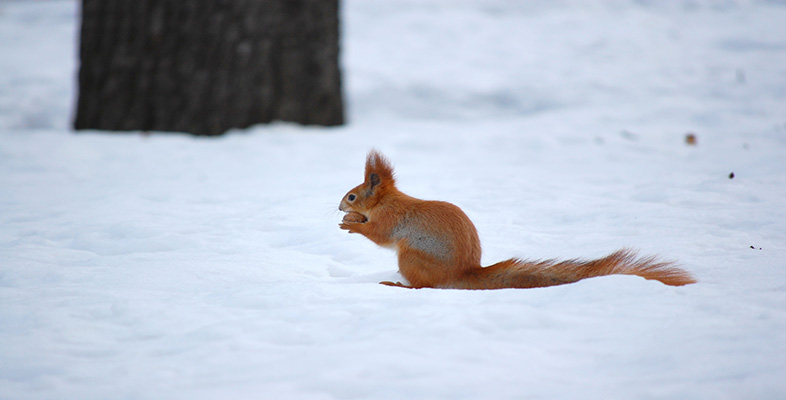1.6 Conclusion
This course has presented an overview of the ways in which organisms living in temperate habitats are adapted to survive the winter. The course has shown how a limited set of environmental changes associated with the onset of winter can lead to a diversity of adaptations and therefore a large diversity of species.
On the basis of the examples discussed in this course, we can identify four factors that contribute to the diversity of adaptive strategies for coping with winter.
Alternative strategies and trade-offs For any one environmental 'problem', there may be two or more solutions that may be appropriate in certain species under certain conditions. Thus, remaining active, becoming dormant and migrating are all viable options for long-lived organisms to cope with winter. Among animals that become dormant, building up reserves in the form of a larder is an alternative to depositing lipids in adipose tissue. These adaptive solutions may be thought of as being traded off, i.e. natural selection may lead to an organism adopting one particular adaptive solution. This effect is reinforced by an organism's evolutionary history (see below).
Phylogeny The evolutionary history of different groups of organisms has equipped them with a range of adaptations that predispose them towards one strategy rather than another. For example, endothermy and thick fur make hibernation a viable strategy for mammals, wings make long-distance migration a viable strategy for birds.
Size Body size can have a marked effect on what organisms do in winter. Dying back and overwintering as an underground storage organ is a viable option for small plants, but not for large woody ones; hibernation is possible for small to medium-sized mammals but not for large ones.
Life history The particular life history of organisms allows them to survive the winter in different ways. Thus annual plants have the option of overwintering as small plants or seed whilst herbaceous perennial plants have the extra option of surviving the winter underground. As life history is itself subject to natural selection, it is another example of evolutionary history restricting the options of adaptive solutions.
A fifth factor, which we have not had the space to explore in this course, is coevolution. Through coevolution, adaptations by one group of organisms create opportunities for other groups. Thus, in the context of this course, if it were not for the fact that many plants store food over the winter, there would be little opportunity for many herbivores to remain active in winter. Coevolution implies that, if selection favours herbivores that can exploit underground storage organs, then, equally, selection also favours plants that are able to defend these resources.
